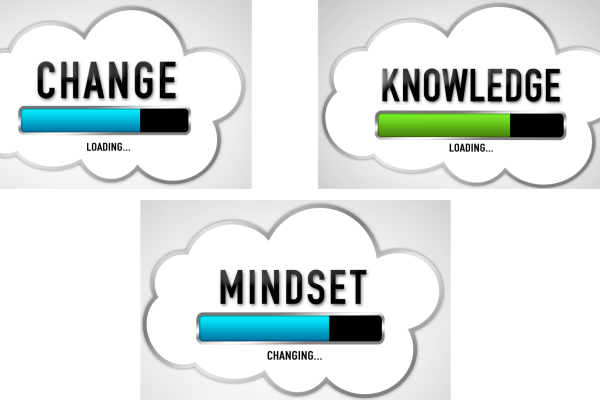Comments (0)
PLC Newsletter: The Value of Knowing Your Organization’s and Your Personal Values
The Pitts Leadership Consulting team recently celebrated five years in business. We are grateful that we made it to this important milestone. We are not throwing ourselves a big party this year because we are laser-focused on growing the business and positioning ourselves for what is next. That said, I get to practice what I preach about celebrating wins. I am simply doing that exercise in a more reflective way and sharing my thoughts with all of you.
What has enabled us to get to this point? There are so many things that I can point to, which, when I think about it, always brings me back to one foundational thing. Values. For some, this may sound trite. So many people write about and discuss the importance of values. I believe engaging in an active dialogue about values and their importance is a worthwhile exercise because in this world full of busyness, we often need to be reminded of the basics.
Why Values Matter
Values matter because they are a building block of culture. Within the realm of organizational culture, I’m going to throw back to Edgar H. Schein who has written several seminal works on the subject. He defines culture as “a pattern of shared basic assumptions that was learned by a group as it solved its problems of external adaptation and internal integration, that has worked well enough to be considered valid and, therefore, to be taught to new members as the correct way to perceive, think, and feel in relation to those problems.” (Schein, 2004) Phew! What does that mean in layman’s terms? My interpretation is that an organization has an identity that has evolved over time that has served it well.
Values are a key part of communicating that identity, i.e., the essence of the foundational blueprint that governs the systems, processes, practices, ways of working, norms, etc., that enable company operations. They represent the “how” language that the organization wants everyone to follow. The more the people within the organization align on the “how,” it makes the “what” easier to do. It’s more efficient, enabling people to be more productive. And with the right strategy, planning and execution, the organization can be more profitable.
Values are especially powerful when it comes to effective decision making. Employees at every level within your organization are making a series of decisions, large and small, every minute of every day. Evaluating whether those decisions align with stated organizational values can mitigate outlier behavior that may be incongruent with the culture. You can imagine how impactful integrating values-driven decision making can be as an organization grows and scales.
When an organization is operating contrary to its values, that, frankly, is a problem. People opt-in to an organization because of its identity. Organizational identities, like that of the people within them, may shift over time. The question is, will people continue to see themselves successfully navigating within the organization over time? People continually evaluate that fit – whether they belong. They tend to stick around as long as they align with that identity and will tap out eventually when they don’t. Their language of why they left can often be summed up as a values mismatch. Organizations should want to reduce, mitigate and eliminate the values mismatch in order to retain engaged employees that are motivated to produce tangible results that help organizations win.
We’ve had internal conversations at PLC when we feel like an action has occurred that does not align with our values. Those conversations, while challenging, are thoughtful and productive because we have our values as our guide to ensure that we are walking the talk, reinforcing what we believe is important.
I am going to share some exercises below to help you evaluate what’s working and where there may be a gap between your organization’s values and your own. The ideal outcome is to have clarity regarding what is working for you and where there is opportunity to close a gap that may exist. Let’s go!

Identify Your Organization’s Values
Your organization likely has core values listed on its website. Find out what they are if you don’t already know. Any words that are published and communicated are not only there as internal guidance but also tell the market what is important to the organization. Values are an extension of the organization’s brand. Ideally, there will be supporting language for each value to clarify the intention behind why those particular words were selected. Once identified, write down the evidence that you know of that supports the values on the site. Analyze the words that your organization has selected as a foundation for its culture. If you don’t have evidence to support a particular value, make a note.
Determining Your Values
Identifying your personal values can be a simple exercise that you can complete in 30 minutes or less. Acquire a list of values as your starting point. I often use Brené Brown’s Dare to Lead List of Values. The list isn’t exhaustive but it is a solid starting point. Take 10 minutes to review the list and identify no more than 5 values that you believe are core to who you are and how you want to be.
Why 5? Well, if you have more than 5 values, you are less likely to actually remember what they are and keep them top of mind in all of the things that you do. Full disclosure, I have 6 core values: authenticity, integrity, compassion, leadership, learning and community. I think about them daily and talk about them often.
If you identify more than 5, that’s understandable. There may be more than 5 words that really resonate with you. However, we are focused on the things that truly matter most to you. So you still want to whittle the list down to 5. For example, I value diversity, equity and inclusion, yet they don’t show up in my values list. That is intentional. I decided that those values really come together for me in the word “community” because it is the output of those inputs.
To support that exercise, write down the “why” behind your choices. If you want to get an “A” on this assignment, write down what those values look like in action for you. That is, clarify the evidence that would demonstrate how those values show up for you in a work context, similar to what you did when working through your organization’s values.
Evaluate the Gap
Once you have completed the exercise, go back to your organization’s core values. Assess where there is alignment between your personal values and those of the organization and where there is not. Remember that the words your organization uses to express its values may not be an exact match to your own, yet there may be overlap in the spirit of the values. If you already identified what “good” looks like for you when those values are happening in practice, this evaluation will likely be a straightforward exercise.
Take Action
If and when you have completed the aforementioned exercises, you can be better positioned to determine the actions and practices that would amplify values alignment and mitigate a mismatch. There may be insights that you uncovered that you need to stop, start or continue. You may need to have conversations with your direct reports, manager or peers that reinforce what you perceive is working or what gaps exist and invite in their thoughts and feedback. Starting from values and sharing evidence can open up a powerful conversation that produces game-changing outcomes that are organized rather than arbitrary.
Final Thoughts
Organizations are an amalgamation of people. Values are the glue that brings people together for a shared purpose. They are not talking points that look nice on a website. They serve as a commitment for how the people within the organization are going to be together. They are a powerful tool that gets to be a part of our everyday language.
Bibliography:
Schein, E. (2024). Organizational Culture and Leadership. John Wiley & Sons, Inc.




LEAVE A REPLY
Your email address will not be published. Required fields are marked *